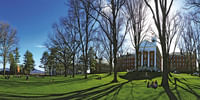The demand for CMAs (AAMA) is evidenced by the United States Bureau of Labor Statistics projection that medical assisting is one of the fasted growing professions, increasing by more than 25% through the year 2024.
The practice of Medical Assisting directly influences the public?s health and well-being and requires mastery of a complex body of knowledge and specialized skills requiring both formal education and practical experience that serve as standards for entry into the profession. Duties of a medical assistant can include obtaining referral and surgery pre-authorizations, transcribing patient encounters, measuring vital signs, performing routine lab tests, operating X-ray and electrocardiograph equipment, assisting the doctor during exams, scheduling appointments and surgeries, preparing and maintaining medical records, and ordering supplies.
Medical Assistant courses require that students work with patients; therefore, enrollment requires students to complete the Hepatitis B vaccinations series and to have a current (within one year) TB test. Students are responsible for obtaining any necessary health exams, immunizations, evidence of a TB test, titers, etc., which may be necessary to meet requirements by the College and affiliating clinical agencies.






.jpeg?tr=h-40,w-40,c-force)